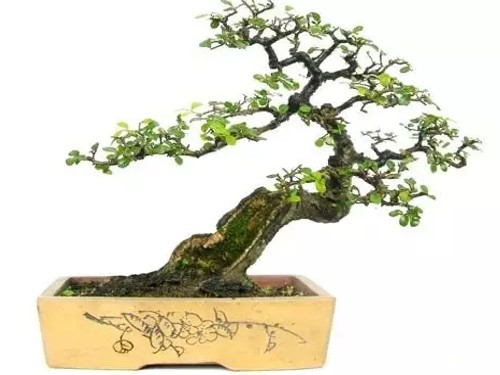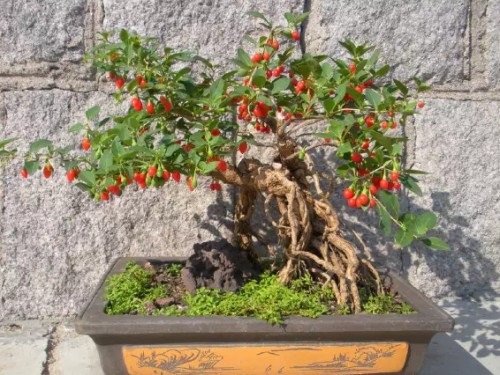Causes and treatment of fallen leaves of banyan bonsai
Banyan bonsai refers to banyan trees as materials, for the purpose of viewing, through a variety of means shaped into a banyan potted plant. Banyan trees are very vigorous and easy to maintain and manage, but sometimes they will encounter some problems, such as falling leaves.
Now there are many friends who like to cultivate banyan bonsai, because the shape of banyan bonsai is very beautiful, and its shape is very pleasing in many plants. However, many people simply do not know how to raise banyan trees, and many people encounter difficulties in planting banyan trees that lead to their death. Flower friends in the breeding process often encounter the problem of banyan leaves, really can not start, can not find a solution.

How to control the leaves of banyan potted plants? In response to this situation, we can summarize the following six points to prevent and control the leaves of banyan bonsai:
1. When purchasing, choose healthy long-term planting pots with leaves stretched, green and bright, and no pests and diseases, and the culture soil should be loose and fertile. It may be that the banyan tree itself is not healthy enough, or it is not suitable for the environment when it is bought. Therefore, when purchasing, we should choose healthy bonsai with unfolded leaves, bright green and bright, and no pests and diseases on the whole plant, and the pot soil should be loose and fertile. After buying it, we should put it in a brighter room or courtyard. The temperature should be between 10°C and 30°C and the change range is not large. In winter, it should not be lower than five degrees, and in summer, it should not be higher than three or five degrees. Pay attention to ventilation and spray water on the leaves frequently.
2, to be placed in a brighter room, the temperature between 10℃ and 30℃ and the range of change is not large, winter is not lower than 5℃, summer is not higher than 35℃, and pay attention to ventilation, often spray water to the foliage. After the rain, before the cold dew can also be placed in outdoor cultivation, summer slightly plus shade. Keep away from heat sources in dry rooms, especially at low temperatures.
3, thin fertilizer application, more thin cake fertilizer water or alum fertilizer water, irregular spraying of 0.3% urea water, 0.3% potassium dihydrogen phosphate solution, etc., avoid applying thick fertilizer.
4. Control of defoliation. Once the fig leaves, spray 95% anti-falling element WP 50000 times solution, plant cytokinin 0.4% WP 800 times solution, etc. In the case of sufficient fertilizer and water, gibberellin 20 mg/kg water can also be sprayed for control, and serious cases can be once or twice a week. At the same time, we should also consider soil, fertilizer, water, pipe and so on comprehensively, and treat them according to symptoms.
5. Actively prevent and control diseases and insect pests. Available multi-effect Ling 14.5% water-soluble powder 150 times to 200 times solution, or 20% Tuba wettable powder 500 times solution, such as irrigation roots, once every 20 days. Apply 3% furadan granules to roots, 5 g to 10 g per plant, once every 20 days to control pests. Leaf diseases were controlled by spraying 70% thiophanate-methyl WP 1200 times solution on leaves.
6. Prevention of defoliation. Can spray 50 mg/kg of water cytokinin, 0.01% rich 300 times to 400 times of liquid medicine, every 15 to 20 days once. In the spring and autumn vigorous growth period, 15% paclobutrazol wettable powder can also be sprayed 300 times to 500 times once or twice. When the air is dry or dry, it can also spray 200 times of high fat film concentrated emulsion. Before changing the environment or to strengthen the tree, root irrigation with ABT3 rooting powder solution of 5ppm to 10ppm can be used.
Reminder:
Banyan bonsai should generally be placed in a ventilated and transparent place, daily attention should be paid to watering, fertilization, pruning, prevention and control of diseases and insect pests, so that banyan trees have a certain space humidity, otherwise insufficient sunlight, poor ventilation, no certain space humidity, easy to make plants yellow, hair dry, leading to diseases and insect pests, or even death.
Time: 2019-06-01 Click:
- Prev

What if the leaves of elm bonsai turn yellow?
Elm trees, especially the old piles that grow in the wild, have gradually formed many different strange gestures after years of man-made chopping axe chisels, or wind and rain erosion, animal bites and so on. Some are intertwined, vigorous and simple, while others turn decay into magic, withered roots and new leaves, unique caves, and are excellent materials for making bonsai.
- Next

What about Chinese wolfberry bonsai leaves and yellow fallen leaves
Chinese wolfberry is a kind of nourishing traditional Chinese medicine, this plant has strong sprouting and tillering, it has been appreciated by potted plants since ancient times, usually the branches of Chinese wolfberry hang very elegant, its flowers are purple, and the red fruit is covered with branches after autumn, no matter when the ornamental effect is very good. The branching ability of Lycium barbarum is strong, and the new branches are thriving.
Related
- Fuxing push coffee new agricultural production and marketing class: lack of small-scale processing plants
- Jujube rice field leisure farm deep ploughing Yilan for five years to create a space for organic food and play
- Nongyu Farm-A trial of organic papaya for brave women with advanced technology
- Four points for attention in the prevention and control of diseases and insect pests of edible fungi
- How to add nutrient solution to Edible Fungi
- Is there any good way to control edible fungus mites?
- Open Inoculation Technology of Edible Fungi
- Is there any clever way to use fertilizer for edible fungus in winter?
- What agents are used to kill the pathogens of edible fungi in the mushroom shed?
- Rapid drying of Edible Fungi

